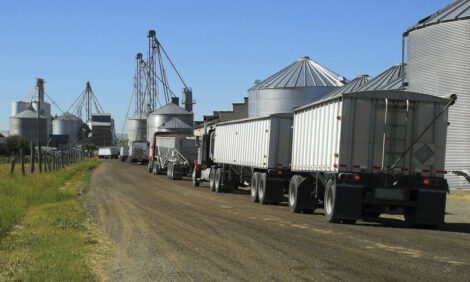



USDA predicts pork will overtake beef by 2028
The new "Long-term Projections Report" released by the USDA predicts a positive future for pork production.The "Long-term Projections Report" covers all markets, from corn and rice to dairy and pork. The most recent report indicates that the next 10 years will be a period of change within the livestock industry, the USDA reports.
Prices
In the beef cattle industry, the feed price ratio (cattle price/feed price) is expected to decline over the projection period reflecting both lower cattle prices and higher feed prices, suggesting lower returns to production. In the hog industry, the feed price ratio is expected to decline and then recover some of its value by the end of the decade while the broiler industry’s feed price ratio is expected to decline in the first part of the decade and gradually increase by the end of the decade. Meanwhile, both domestic and global demand for meats and dairy products are expected to remain strong. Despite expected declining revenues over the next ten years, red meat and poultry production all increase over the projection period.
Increasing corn prices and lower pork prices in the first half of the decade also lower the hog feed price ratio (hog price/corn price), creating incentives to decrease farrowings. However, increased slaughter weights and the continued commercialisation of the industry continue the upward trend in pork production. While pork production trails beef production for most of the decade, by 2028, pork production is expected to edge past beef production at just over 30 billion pounds.
Per capita food use
Per capita disappearance of red meat (beef and pork) and poultry (broilers and turkey) is projected to rise from over 214 pounds per person in 2017 to nearly 223 pounds by 2028. In 2019, per capita disappearance is expected to be nearly 222 pounds per person, representing a record level of disappearance.
Pork production is expected to continue to grow along with per capita pork disappearance in 2019. Disappearance is expected to stabilise between 53 and 54 pounds per capita for the remainder of the decade. Throughout the projection period, pork exports continue to dominate imports, and pork production gains are expected to be sufficient to accommodate both the widening trade surplus as well as increased domestic demand.
Exports
While the US dollar is generally expected to weaken over the next 10 years, it remains comparably strong relative to its value earlier in this decade. Despite the strong dollar, US red meat and poultry exports are projected to rise over the next 10 years as steady global economic growth, particularly in emerging and developing economies supports foreign demand from the US market.
US pork exports are projected to grow faster than beef exports and on par with poultry exports. Production efficiency gains in the hog sector continue to enhance the sector’s international competitiveness. The United States is expected to maintain its position as the second largest exporter of pork behind the European Union while exporting more than twice the third largest exporter, Canada. Over the next decade, the EU is expected to increase its market share as the United States’ and Canada’s market shares are expected to decline.
Read the full agricultural projections report online.








